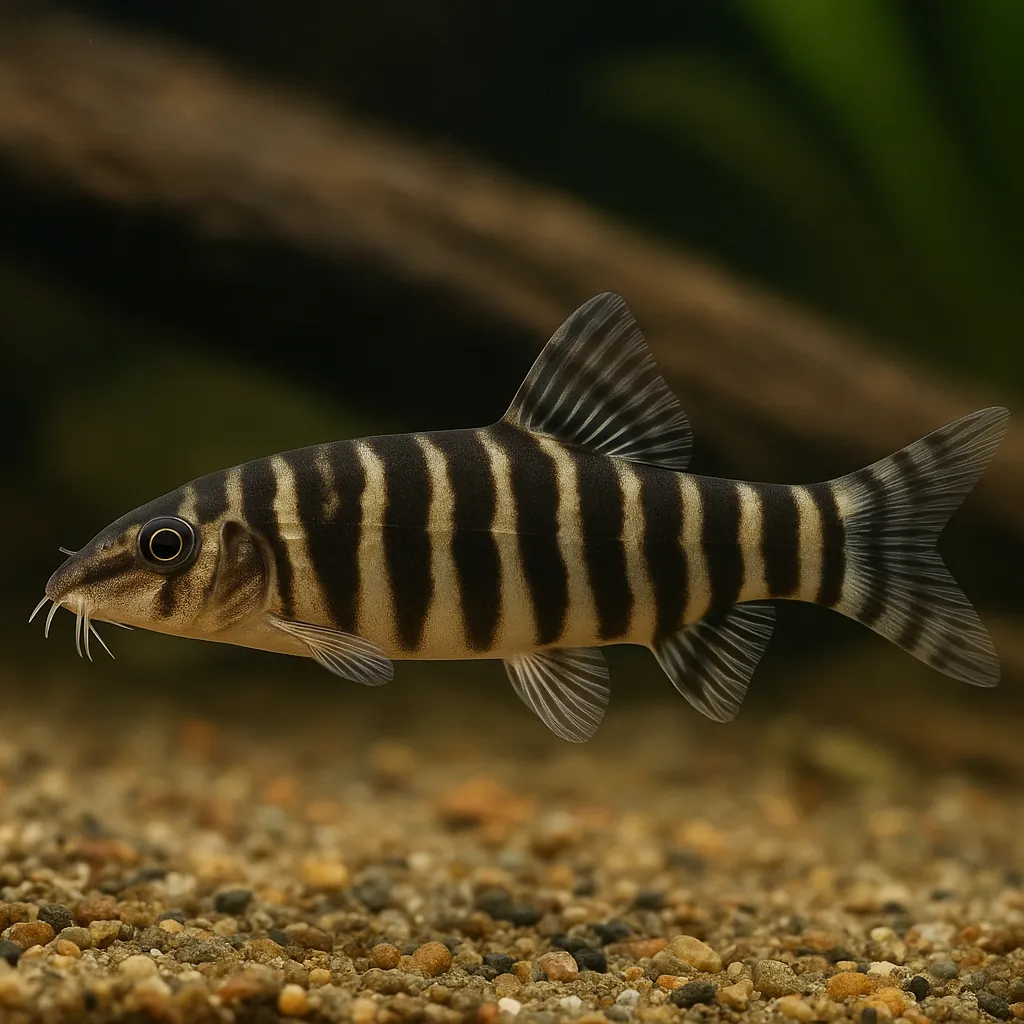
Zebra loach
Introduction
The Zebra loach (Botia striata), also known as the Candy Stripe loach, is a captivating freshwater fish cherished by aquarists for its striking striped pattern and lively demeanor. Native to the streams and rivers of the Western Ghats in India, this species adds both visual appeal and dynamic activity to home aquariums. While generally peaceful, Zebra loaches require specific care to thrive, making them suitable for aquarists with some experience.
What makes the Zebra loach a popular choice among aquarists?
Their unique zebra-like stripes and active nature make them a visually appealing and engaging addition to community tanks.
Are Zebra loaches suitable for beginner fishkeepers?
Due to their sensitivity to water conditions and specific care requirements, they are better suited for aquarists with some experience.
Care and Environment
Proper care for Zebra loaches involves attention to tank size, water parameters, diet, and habitat setup.
What is the minimum tank size for a Zebra loach?
A minimum of 114 liters (30 gallons) is recommended to accommodate a small group, as they are social fish that thrive in groups of at least five.
What are the ideal water parameters for Zebra loaches?
They prefer temperatures between 23°C and 26°C (73°F to 79°F), a pH range of 6.5 to 7.5, and water hardness between 5 to 12 dGH.
How should the tank be set up for Zebra loaches?
Use a soft, sandy substrate to protect their sensitive barbels. Include plenty of hiding spots like caves, driftwood, and plants to mimic their natural habitat and provide security. Ensure the tank has a well-fitting lid, as Zebra loaches are known to jump.
What should I feed my Zebra loach?
They are omnivorous and will accept a variety of foods, including high-quality sinking pellets, live or frozen foods like bloodworms and brine shrimp, and occasional vegetable matter such as blanched zucchini or spinach.
Are there any specific challenges in caring for Zebra loaches?
They are sensitive to water quality and require regular maintenance to keep the environment clean. Additionally, they can be shy and may hide if not provided with adequate shelter.
Origin and Habitat
Zebra loaches are endemic to the Western Ghats mountain range in India, inhabiting clear, fast-flowing streams and rivers. These waters are typically well-oxygenated with sandy or rocky substrates and abundant vegetation. Seasonal variations can affect water flow and temperature, influencing their natural behaviors.
Where are Zebra loaches found in the wild?
They are native to the Western Ghats in India, specifically in clear, fast-flowing streams and rivers.
What type of environment do Zebra loaches prefer?
They thrive in well-oxygenated waters with sandy or rocky substrates and abundant vegetation.
Temperament and Compatibility
Zebra loaches are generally peaceful and social, preferring to be kept in groups of at least five to reduce stress and encourage natural behaviors. They are active during the day and can coexist with a variety of non-aggressive tank mates. However, they may show aggression towards smaller bottom-dwelling species or those with long fins.
Can Zebra loaches be kept with other fish?
Yes, they can be kept with other peaceful, non-aggressive fish. Avoid housing them with small bottom dwellers or long-finned species to prevent potential aggression.
Do Zebra loaches need to be kept in groups?
Yes, they are social fish and should be kept in groups of at least five to promote well-being and natural behaviors.
Interesting Facts
Zebra loaches are known for their ability to control snail populations in aquariums, as they naturally feed on small snails. They are also capable of producing clicking sounds, especially during feeding or social interactions. In the wild, their populations are considered endangered due to habitat loss, making it important for aquarists to source captive-bred specimens.
Can Zebra loaches help control snail infestations?
Yes, they naturally feed on small snails and can help manage snail populations in aquariums.
Do Zebra loaches make any sounds?
Yes, they can produce clicking sounds, particularly during feeding or social interactions.
Sources
All information in this article has been gathered from the following reputable sources:
Overview
Recommended Tank Size 39.6 Gallons (for groups of 5 or more) |
Minimum Group Size 5 |
Minimum Tank Volume 30.1 Gallons |
Maximum Adult Length 3.5 inches |
Average Adult Length 3.1 inches |
Shoaling (6+ required) Yes |
Preferred Water Type Freshwater, soft, slightly acidic |
Temperature Range (°C) 23–26 |
pH Range 6.5–7.5 |
Water Hardness (dGH) 5–12 |
Typical Lifespan (years) 8 years |